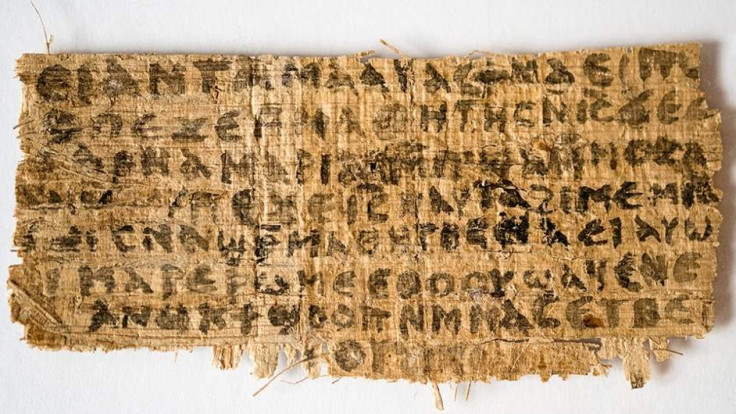Gospel of Jesus' Wife: Ancient Egyptian Papyrus With First Reference to Wife of Jesus is Legitimate

The first-known document to make reference to Jesus being married has revealed no evidence of modern forgery.
The Gospel of Jesus' Wife, a controversial text written on ancient Egyptian papyrus, has been the subject of debate among historians and theologians since it was introduced at a conference in Rome 18 months ago.
Published in the Harvard Theological Review, the article supports the argument of Karen King, a professor at the University of Harvard, who maintains that the document is authentic. She argues that the fragment is a message from the past and resonates with ongoing debates about the role of women in Christianity.
In Coptic writing, the document reads: "Jesus said to them, my wife... she is able to be my disciple." It is a fragment that appears to be cut from a larger document and contains only eight partial lines.
The manuscript is initially dated by King to the fourth century, but reports released by the Harvard Theological Review have concluded the ancient inks and the papyrus fibers date from the seventh to eighth centuries. This information, King said, suggests it is a copy of an earlier text.
Carbon dating has placed the papyrus in the eighth century, which is around 400 years later than King intially thought. Although the tests do not definitively confirm the text is ancient, the ink is consistent with the type used by ancient Egyptians.
King, who began examining the document in 2011 at the request of its owner, suggests the document was part of a debate that took place between early Christians about the role of women, family and celibacy.
The document was bought with five other papyri from a collector who said the pieces were acquired in the 1960s in East Germany.
King said: "I'm basically hoping that we can move past the issue of forgery to questions about the significance of this fragment for the history of Christianity, for thinking about questions like, 'Why does Jesus being married, or not, even matter? Why is it that people had such an incredible reaction to this?'
"Now when I come back and read the fragment, it seems the major issue being talked about was that Jesus was affirming that wives and mothers can be his disciples."
The document has attracted criticism from religious scholars, however, who state that it was created on an ancient piece of papyrus by a highly skilled modern forger, using the correct ink.
Leo Depuydt, an Egyptologist at Brown University, said grammatical errors in the Coptic writing are not consist with a native speaker. One line, he pointed out, reads: "An evil man does not he brings."
He maintains that the papyrus is a modern fake, saying: "As a forgery, it is bad to the point of being farcical or fobbish... I don't buy the argument that this is sophisticated. I think it could be done in an afternoon by an undergraduate student."
© Copyright IBTimes 2025. All rights reserved.





















